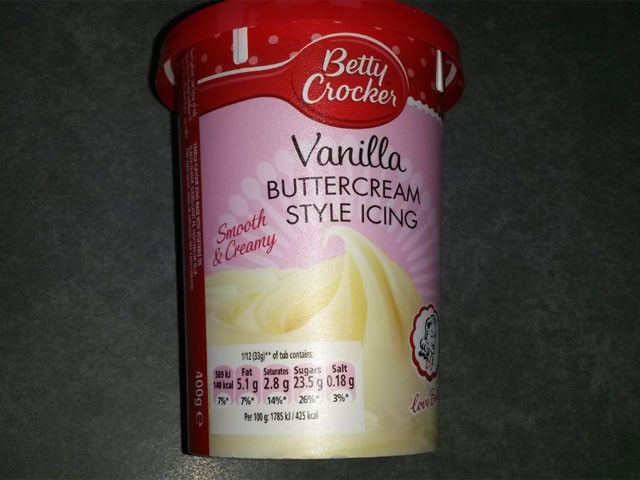Unlike with salt, I was clearer from the outset with sugar why it's bad for us and for our children in particular. I knew that too much sugar could lead to poor dental health and also risks such as diabetes, which is why I've always been careful with my childrens' diet. However, when looking at the issue more closely, my eyes were opened further to the prevalence of sugar in processed foods (even in apparently savoury products!) and also the length of the list of risks associated with its excessive consumption.

Excess sugar: Risk factors in children
Many foods and drinks that contain added sugars can be high in energy (measured in calories/kcal) and often have few other nutrients. Eating these foods too often can mean you eat more calories than you need, which can lead to weight gain and obesity. Already the NHS states that one in every five children aged 10 to 11 in the UK is obese; a frightening statistic considering being overweight can increase your risk of health conditions such as heart disease, type 2 diabetes, strokes and also common types of cancer including cancer of the uterus, gallbladder and kidney.
To mitigate these risks, the government recommends that children should have no more than 19g a day of free or added sugars for children aged 4 to 6 years old (5 sugar cubes), and no more than 24g (6 sugar cubes) for children aged 7 to 10 years old. Free sugar comes in many guises on food labels, but includes:
• corn sugar
• dextrose
• fructose
• glucose
• high-fructose glucose syrup
• honey
• maple syrup
• agave syrup
• invert sugar
• isoglucose
• levulose
• maltose
• molasses
• sucrose
Sugars also occur naturally in foods such as fresh fruit and milk, but we don't need to cut down on these types of sugars as they are naturally contained within the plant/food cells; it is added or released sugar that we need to cut down on.
How much sugar is in our food?
Nutrition labels should help you know how much total sugar there is in a particular food, and often display this figure as "Carbohydrates XX (of which sugars X)". Products are categorised as being high in sugar if they have over 22.5g of total sugars per 100g, and low sugar if they have 5g of total sugars or less per 100g (those between these figures are therefore medium sugar content). Unfortunately, this sugars figure in the nutritional label will usually not distinguish between unwanted free sugars, and those naturally occurring in milk or those present in the structure of foods such as fruit and vegetables e.g. tinned pineapple may have no free sugar, but it will still have a naturally high sugar content because of the sugar inherent in the fruit's structure. You'll therefore often need to also look at the ingredients list of a product to identify whether sugar has been added or not. The order of the ingredients on the list must always also be the order of the weight of the ingredient added. When shopping we therefore need to use common sense, then the nutritional label and also the ingredients list to make our assessments as to what is healthy and what to leave behind.
Most of us have probably heard the horrifying statistic that a can of Coca Cola has 39g of added sugar, over twice as much as a 6 year-old's daily recommended limit! But even 100% pure unsweetened fruit juice, though containing beneficial vitamins and minerals, is high in the type of sugars we need to cut down on because these are released through the juicing process. Here, I've pulled out some basic foods and checked their sugar content, to give you an idea of how much is hidden, sometimes in unexpected places!

A cupcake with frosted icing and sprinkles approximately 34g*
58g Milky Way bar 35g
1/2 can serving of regular Heinz baked beans 10.3g
45g serving of Jordans Luxe Fruit Nut Crunchy 13.9g
30g serving of Kelloggs Frosties 11g
125g serving of Dolmio Original Bolognese sauce 7.3g
47g pot of petit filous 5.6g**
* Based on one serving of frosted icing containing 23.5g of sugar, the cupcake itself containing approximately a conservative 10g, plus sugar sprinkles on top
**some likely to be naturally occurring in milk, but the pot contains 6.8% added sugar plus released sugars from pureeing the raspberries
You can see just how quickly your children will exceed the daily recommended limits and therefore how we need to really manage their sugar consumption. We don't want to dwell on the horrible, sticky stats; instead, what can we do in practical terms, to reduce our children's overall intake?
Reducing our children's sugar consumption
Drinks:
Essentially, fresh, unprocessed foods are likely to have lower sugar contents than their processed, cooked or juiced equivalents. The sugars found naturally in whole fruit, fro example, are less likely to cause tooth decay, because the sugars are contained within the structure of the fruit. But when fruit is juiced or blended, the sugars are released, can damage teeth and add to the other negative effects of sugar, especially if fruit juice is drunk frequently.
Try to give children water, especially between meals. Milk is also preferential compared to sweeter alternatives. Limit fruit juice to a small (150ml) glass a day from juice, smoothies or both. When buying juice be careful to check the description and/or ingredients carefully; juice drinks for example mean that the contents aren't just fruit juice and can have added sugar amongst other ingredients. Squash is also not classed as fruit juice in this context, as it has little fruit content and often has added sugar.
Snacks:
We all know that sweets, cakes and biscuits are high in sugar, so try to avoid these and give them only as a really special treat i.e. not every day. We've seen above, that a cupcake for example, can in itself contain more sugar than a child's total daily recommended limit.
Many snacks that I've given my children are based on dried fruit e.g. YoYos. The problem with these is that some sugars can be released during the cooking process, and dried fruit has a tendency to stick to teeth so also heightening the risk of tooth decay. However, these have only natural sugars and do count towards your 5 a day, so provided they are given at mealtimes or teeth are cleaned after eating them, they still seem like a good compromise. The same applies to other dried fruit e.g. raisins, dried apricots, dates, etc..
To be completely guilt-free in your children's snack choices, give them nuts, fresh fruit, vegetable sticks with a little hummus, plain popcorn, Ryvita or a glass of milk. All are nutritious snacks which are also low in free sugar.
Meals:
Breakfast cereals should be looked at closely as very many are high in sugar; Weetabix, Plain Shreddies and porridge are all good alternatives as is sugar-free muesli and plain toast with butter. Couple with fresh fruit and a glass of water or milk and you're giving your kids a great start to the day.
As I've noted previously, what is clear is that much processed food contains added sugar in some form. For this reason, cooking from scratch is obviously ideal, however not always practical. Even where you do cook from scratch, you'll need to watch for condiments such as mayonnaise, ketchup and HP sauce, all of which are high in sugar.
- Try giving children egg on toast rather than baked beans
- Ready meals are notorious for having excessive salt and sugar added, so check ingredients and labels VERY carefully before giving these to children
- Check bolognese sauce carefully when you're buying; Loyd Grossman Bolognese Pasta Sauce was the lowest sugar of the brands I looked at.
- Shop bought soup often has added sugar e.g. Heinz Tomato soup has 9.7g per serving, so check ingredients carefully
- Bear in mind that % RDA amounts on labels are normally in relation to an adult, so if something is 10% of an adult's RDA of sugar, this is much higher for a young child.